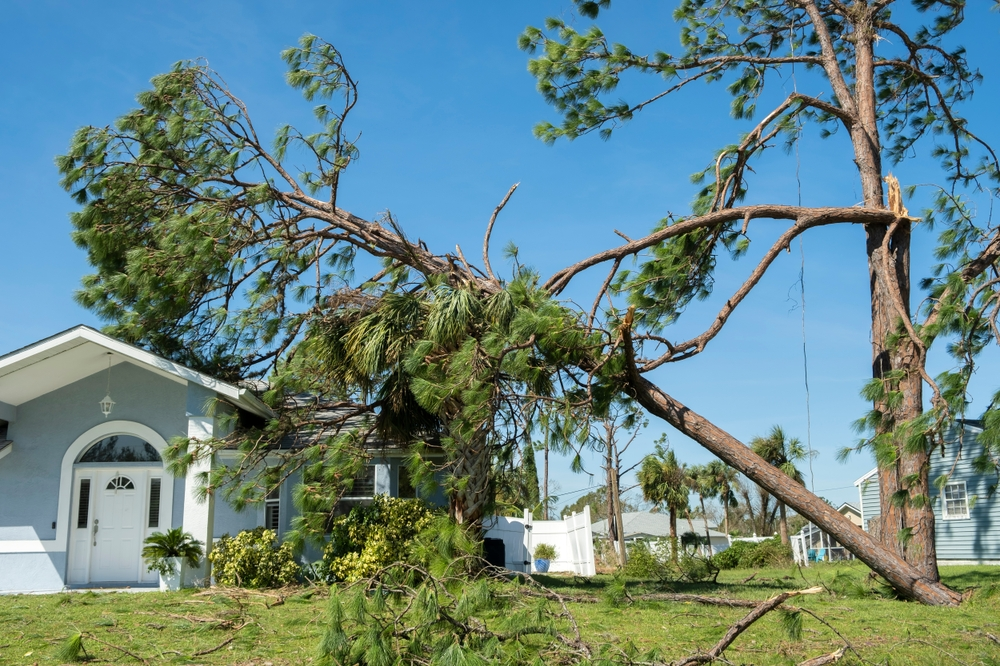
Managing trees after a hurricane can be challenging and potentially dangerous, but with the right knowledge and approach, Florida homeowners can ensure their safety and protect their property. This guide from Tree Service Expert will explore ten essential practices every homeowner should follow when dealing with storm-damaged trees. From assessing tree damage to choosing professional help, these tips will help you navigate the aftermath of a hurricane effectively.
1. Assess Tree Damage Safely
Before approaching any storm-damaged trees, ensure your safety first. Look for downed power lines, unstable structures, and hanging branches. Use binoculars for a preliminary assessment from a safe distance.
2. Document the Damage
Take photographs and videos of damaged trees for insurance purposes. This documentation will be crucial when filing claims or discussing options with tree care professionals.
3. Understand Types of Tree Damage
Familiarize yourself with different types of storm damage, including uprooting, split trunks, broken limbs, leaning trees, and structural compromises. Each type may require a different approach.
4. Prioritize Immediate Hazards
Identify trees or branches that pose immediate risks to people or property. These should be your top priority for removal or professional assessment.
5. Know When to Call Professionals
For large trees, those near structures, or any situation that seems unsafe, always consult with qualified tree care professionals. Tree Service Expert has the expertise and equipment to handle complex situations safely.
6. Consider Tree Preservation
Not all damaged trees need removal. Trees with minor damage to small branches or primarily cosmetic issues might be salvageable. Consult an arborist to explore preservation options.
7. Understand the Financial Aspects
Keep detailed records of all assessments, work performed, and associated costs. Understand what your insurance typically covers regarding tree damage and removal.
8. Make Informed Decisions
Take a systematic approach to decision-making:
- Conduct an initial assessment
- Seek professional evaluations
- Consider multiple options
- Understand potential outcomes and timelines
9. Prepare for Future Storms
Implement preventive measures such as regular tree maintenance, identifying potential risks before storm season, and creating an emergency response plan.
10. Choose Professional Help Wisely
When hiring tree care services:
- Verify proper licensing and insurance
- Request detailed written estimates
- Ask about their approach, methods, and storm response experience
- Understand their cleanup procedures
Tree Service Expert meets all these criteria and offers services in various locations across Florida.
FAQs
Q: How soon after a hurricane should I assess my trees? A: As soon as it’s safe to go outside, but maintain a safe distance from potentially hazardous trees.
Q: Can I remove small fallen branches myself? A: Yes, if they’re within easy reach and pose no risk. Always use proper safety equipment.
Q: How do I know if a leaning tree needs removal? A: Consult a professional arborist. They can assess the tree’s stability and recommend appropriate action.
Q: What should I do if a tree has fallen on my house? A: Evacuate the area if it’s unsafe, contact your insurance company, and hire a professional tree removal service like Tree Service Expert.
Conclusion
Managing trees after a hurricane requires careful consideration of safety, property protection, and long-term planning. By following these ten best practices, you can navigate the challenges of post-hurricane tree management effectively. Remember to prioritize safety, seek professional help when needed, and make informed decisions to ensure the best outcomes for your trees and property.
For more information about proper tree care and professional services after a hurricane, visit the Tree Service Expert website. Our team of experienced professionals is ready to assist you with all your post-hurricane tree management needs.

